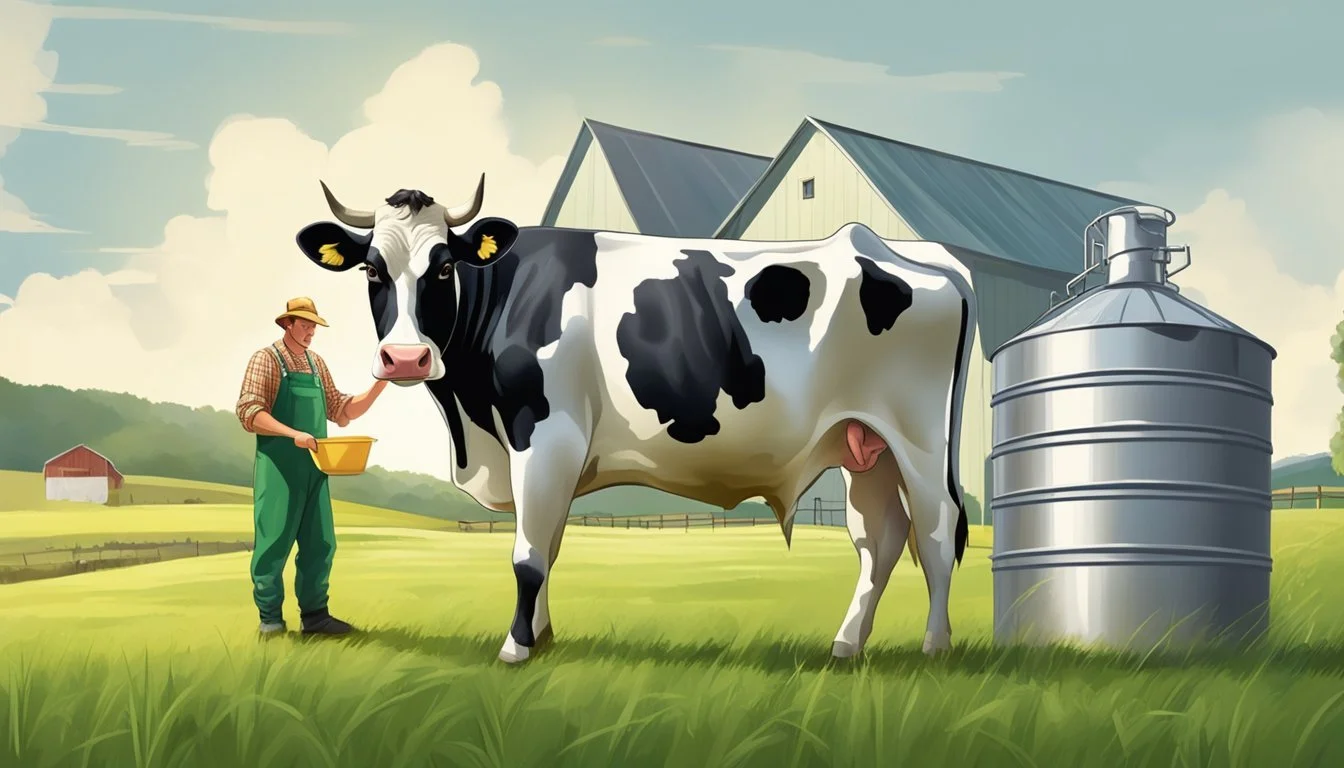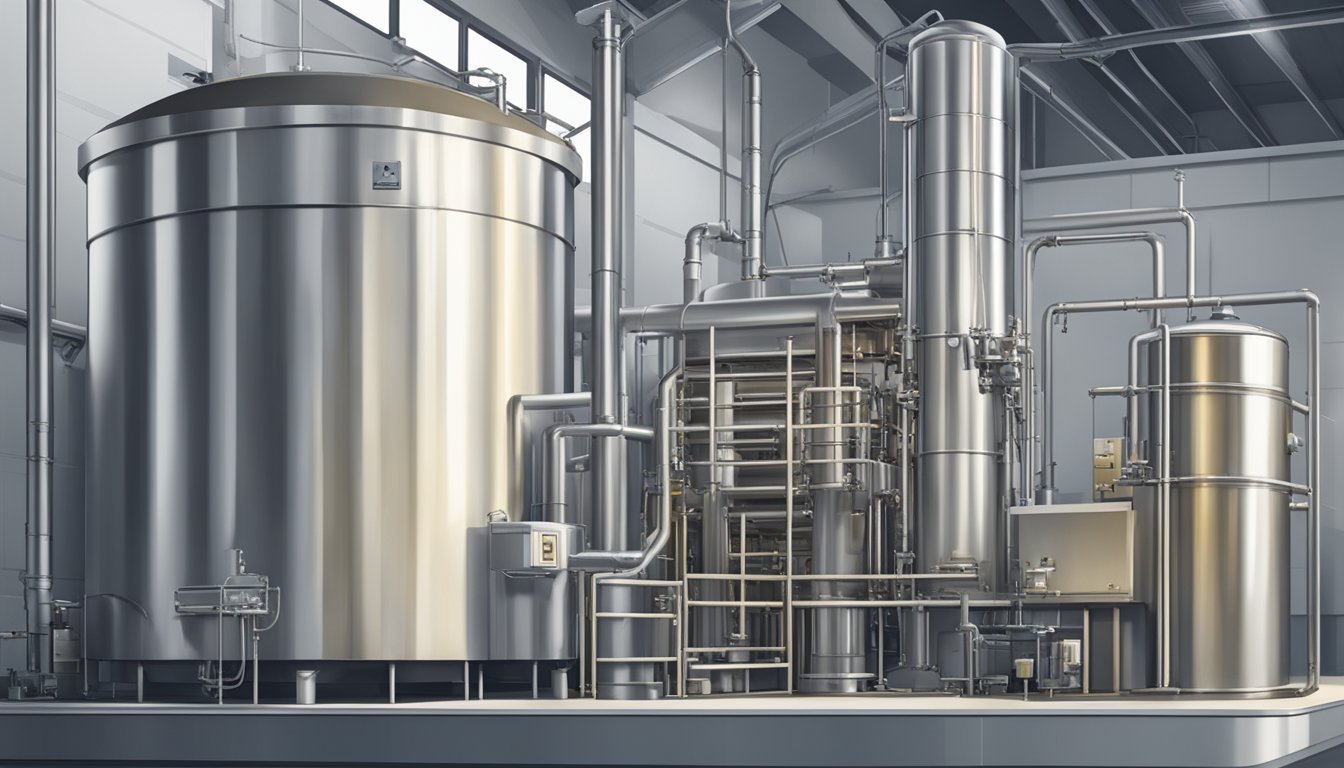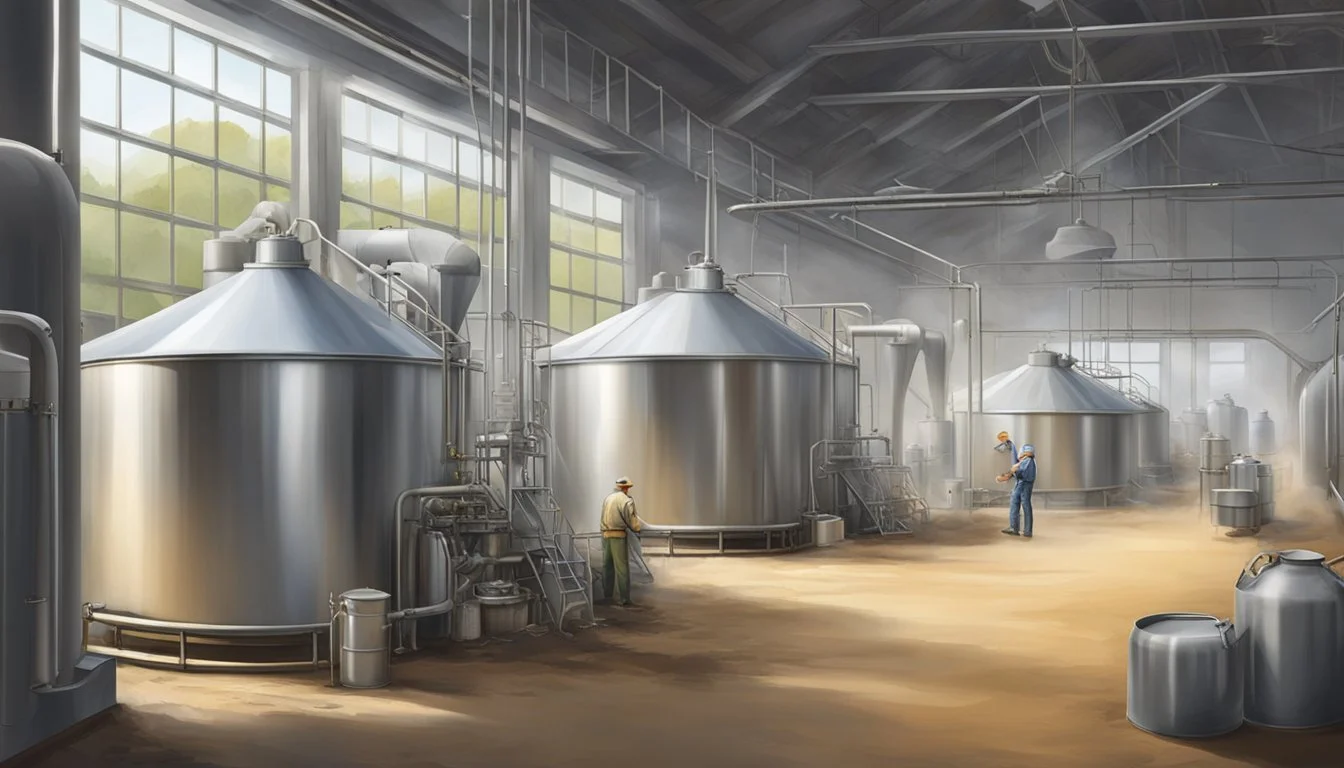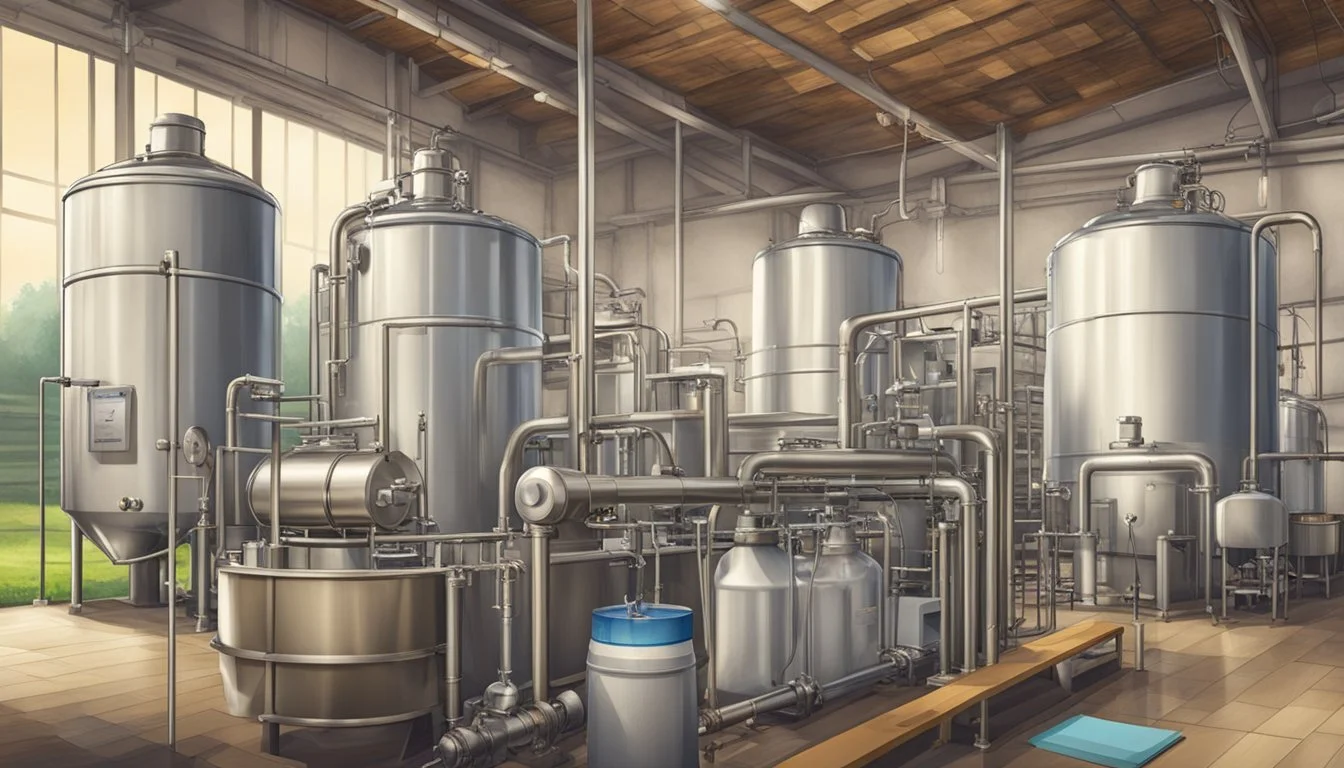The History of Milk Pasteurization and the Raw Milk Alternative
A Concise Overview
The history of milk pasteurization is a narrative of scientific advancement, public health, and dietary practices. Milk, a staple of the human diet, has been consumed in its raw form for millennia. However, with the advent of pasteurization in the 19th century, a process named after its founder, Louis Pasteur, there was a significant shift in how milk was processed and consumed. Pasteurization involves heating milk to a certain temperature for a set period to eliminate harmful microorganisms. This development aimed to address the public health issues associated with raw milk, which can harbor pathogens like Campylobacter, Cryptosporidium, E. coli, Listeria, and Salmonella.
Despite the widespread adoption of pasteurization due to its ability to reduce food-borne illnesses, there remains a market for raw milk. Advocates for raw milk consumption argue for its taste, nutritional benefits, and support for small-scale farming practices. However, the sale and distribution of raw milk are strictly regulated in many parts of the world to manage the potential risks to public health.
As the debate between the merits of pasteurized versus raw milk continues, it is clear that both forms have played significant roles in the history of human nutrition. Pasteurization stands as a monumental public health achievement, while raw milk provides an alternative that appeals to those seeking less processed food options despite the associated risks. Through this historical lens, the evolution of milk processing reflects broader shifts in societal values concerning food safety, nutrition, and choice.
The history of milk pasteurization is deeply intertwined with the emergence of the raw milk delivery revival and the ongoing discourse surrounding the raw milk legal landscape. While pasteurization has played a crucial role in enhancing milk safety, the raw milk alternative has gained attention for its potential to address raw milk lactose intolerance and offer a wholesome, unprocessed option for dairy enthusiasts.
The process of making raw milk butter has been a traditional practice that highlights the natural, creamy texture inherent in raw milk, showcasing its versatility as a valuable ingredient. A raw milk farmer interview can provide valuable insights into the historical significance of raw milk and the enduring appeal of this unprocessed dairy product as an alternative to pasteurized milk.
As the raw milk delivery revival continues to grow, it reflects a renewed appreciation for natural, farm-fresh products, offering consumers the opportunity to embrace the raw milk alternative while considering individual dietary needs. This historical journey underscores the enduring legacy of raw milk and its potential to provide a wholesome, unprocessed alternative for those seeking a closer connection to their food sources.
The Genesis of Pasteurization
The history of milk pasteurization is intertwined with advancements in understanding pathogens and the evolution of methods to improve food safety. This section explores the early techniques for preserving milk and the groundbreaking work of Louis Pasteur that laid the foundation for modern pasteurization.
Early Milk Preservation Methods
Before the advent of pasteurization, people employed various methods to extend the shelf life of milk and reduce spoilage. These methods primarily focused on controlling temperature and reducing exposure to air. Boiling was a common practice to kill some of the harmful microorganisms present in milk. Cooling was another method used to slow down bacterial growth, with milk sometimes stored in cool streams or cellars. Salting and smoking were less common but served as additional strategies to preserve milk for longer durations. These practices aimed to maintain the integrity of milk for consumption but were not fully effective in eliminating all pathogenic microbes.
Louis Pasteur and the Germ Theory
Louis Pasteur, a French chemist and microbiologist, is renowned for his pivotal role in the development of the germ theory of disease. His research on beer and wine revealed that microorganisms were responsible for fermentation and spoilage. Pasteur's experiments demonstrated that heating these beverages to a specific temperature, which he initially termed "pasteurization," could effectively inactivate the microbes responsible for spoilage, without altering the flavor. Pasteur concluded that microorganisms present in liquids could be controlled through a precisely timed heating process. His work provided the scientific basis to understand that many diseases were caused by pathogens, successfully connecting his findings to the broader germ theory of disease. The adoption of Pasteur's methods in the dairy industry marked a significant leap forward in food safety, ultimately revolutionizing the way milk would be processed and consumed worldwide.
Advancements in Milk Safety
The journey from recognizing milk as a potential carrier of disease to its transformation into a safe consumer product encompasses various incidents of innovation and regulation. This evolution has not just impacted public health significantly but also shaped the dairy industry.
From Wine to Milk
The pasteurization process, a technique originally developed by Louis Pasteur for wine, was adapted for milk to address microbiological concerns. By the late 1800s, Nathan Straus, known for his philanthropic work, established milk depots to distribute pasteurized milk, significantly reducing infant mortality rates and diseases such as tuberculosis which were commonly transmitted through milk.
The Milk Hygiene Movement
The milk hygiene movement gained momentum in the early 20th century, emphasizing the need to prevent contamination at the source. It became evident that hygiene practices needed to encompass the entire chain of milk production, from the cow to the consumer. The movement called for regular inspections, testing milk for signs of contamination, and ensuring cleanliness at every step.
Technological Innovations in Dairy
Technological advances have continually improved milk safety:
Pulsating vacuum milking machines were introduced, reducing the risk of milk contamination from the cow.
The transition to glass bottles helped maintain the quality and purity of milk during transport and storage.
Processing advancements include the development of Continuous Improvement Programs (CIP) that allowed for better sanitization within milk plants.
Overall, these developments have been crucial in ensuring that milk remains a safe, nutritious food product for consumers.
Public Health and Milk Pasteurization
The advent of milk pasteurization marked a significant advancement in public health, aiming to reduce milk-borne diseases and improve community health outcomes.
Combating Diseases
Milk, in its raw form, has been a historical carrier of pathogens causing diseases such as tuberculosis and diphtheria. Pasteurization, the process of heating milk to a specific temperature to kill harmful bacteria, was developed to combat these diseases. It particularly helped in reducing the spread of bovine tuberculosis, a variant transmissible to humans through milk.
Milk Pasteurization Laws
In the late 19th and early 20th centuries, New York City became a pioneer in promulgating milk pasteurization laws. These laws mandated the pasteurization of milk to safeguard consumers from milk-borne illnesses. Statutory interventions played a crucial role in reducing infant mortality rates and improving overall public health standards.
The Role of Public Health Officials
Public health officials spearheaded campaigns to educate the populace on the benefits of pasteurized milk. They were key in the enforcement of pasteurization laws and regulation of milk sanitation. Their efforts resulted in marked declines in diseases once rampant in urban areas, solidifying the status of pasteurization as a critical public health measure.
Raw Milk Advocacy and Controversy
Raw milk has sparked debate due to its claimed health benefits and associated risks, leading to a contentious landscape of advocacy, public health concerns, and governmental regulations.
The Raw Milk Movement
The raw milk movement has gained traction with individuals who assert that unpasteurized milk offers superior health benefits compared to its pasteurized counterpart. Proponents argue that raw milk contains more natural enzymes, beneficial bacteria, and nutrients. The movement has also been linked with a broader pursuit for food sovereignty and a preference for natural food sources.
Supporters believe:
Raw milk has a richer taste.
It preserves essential nutrients and enzymes that pasteurization may destroy.
Key entities:
Enzymes: Natural proteins that raw milk advocates believe are beneficial for digestion and overall health.
Food sovereignty: The right for people to choose where their food comes from and how it's produced.
Health Risks of Unpasteurized Milk
While some consumers prefer raw milk, it's important to acknowledge that unpasteurized milk can harbor dangerous pathogens. These include brucellosis, campylobacter, listeria, and salmonellosis, which can lead to severe health issues and even fatalities, particularly among immune-compromised individuals, elderly, pregnant women, and children.
Pathogens commonly found in raw milk include:
Brucellosis: A bacterial infection from Brucella species causing fever, joint pain, and fatigue.
Campylobacter: Bacteria leading to gastrointestinal illness and potentially long-term arthritis.
Listeria: Can result in listeriosis, a serious infection causing miscarriage, neurological effects, or death.
Salmonellosis: Due to Salmonella species, resulting in diarrhea, fever, and abdominal cramps.
Legal and Regulatory Opposition
Because of the potential health risks, there has been significant legal and regulatory pushback against the sale of raw milk in the United States. Legal frameworks vary by state, with some prohibiting the sale of raw milk entirely, while others allow it under specific conditions. Regulatory bodies, including the Food and Drug Administration (FDA), advise against the consumption of raw milk due to the risk of illness from harmful bacteria.
Legal status:
Permissible: Some states allow with direct farm sales or in retail under stringent conditions.
Prohibited: In other states, sale and distribution are entirely illegal to protect public health.
FDA stance:
The FDA firmly discourages raw milk consumption, citing significant health risks from unpasteurized milk products.
Nutrition, Health, and Milk Variants
Guiding the discourse on milk's role in human health are discussions on the nutritional value of milk, the various methods of milk treatment, and the quest to reconcile food safety with nutritional integrity.
Nutritional Value Debate
Proponents of raw milk argue that it retains a higher level of vitamins destroyed through heat pasteurization, such as vitamin C and certain B-complex vitamins. Critics of pasteurization claim that it reduces the nutritional value; however, most health professionals concur that the benefits far outweigh potential minimal nutrient loss. The pasteurization process is designed to eliminate harmful pathogens while preserving as much of the milk's inherent nutritional value as possible.
Alternative Milk Treatments
Besides traditional pasteurization, methods such as ultra-high temperature (UHT) treatment extend shelf life by heating milk to even higher temperatures. This allows milk to be stored for longer periods without refrigeration. Although some argue that UHT further affects taste and nutritional content, this treatment ensures the destruction of bacteria and spores, making the milk safe for consumption.
Balancing Safety and Nutrition
The central challenge in the milk industry is to balance the eradication of pathogens to ensure safety with the retention of the milk’s nutritional profile. While raw milk's potential benefits include a higher presence of certain enzymes and probiotics, these must be weighed against the risk of foodborne illnesses, which pasteurization seeks to mitigate. For individuals with lactose intolerance, lactose-free options are available, which undergo processes to break down lactose while aiming to keep the nutritional profile intact.
Milk in the Modern Era
The modern era of dairy production is characterized by advanced pasteurization techniques and a constant push towards industry consolidation, where the future of milk safety and technology presents a shifting landscape.
Dairy Farming Today
Today's dairy farms are starkly different from those before the industrial revolution. They are highly specialized operations, with an emphasis on maximizing milk production while also ensuring food safety. The majority of milk in the developed world comes from high-production breeds of cows, specifically the Holstein-Friesian, known for their high milk yield. Dairy operations meticulously manage milkborne pathogens, with regular inspections and adherence to stringent food safety protocols to prevent streptococcal infections and other milkborne illnesses.
Innovations and Consolidation
Innovation in Dairy:
Automation: Robotic milking systems and cow monitors enhance efficiency.
Breeding: Genetic selection leads to higher production and resilience to disease.
Consolidation Impacts:
Smaller Farms: A decline in numbers due to industrial pressures.
Larger Operations: Increased dominance of large dairy conglomerates.
The industry continuously seeks advancements to improve dairy production, including pasteurization. The focus on technological innovations is mirrored by a trend toward consolidation, as smaller operations frequently give way to larger industrial farms.
Future of Milk Pasteurization
The process of pasteurization remains central to milk safety, with ongoing research into alternative methods, like ultra-high temperature (UHT) processing and microfiltration, that could extend shelf life and potentially improve the nutrient profile of milk. The market is also witnessing a surge in consumer interest towards raw milk, fueled by claims of better taste and health benefits, although it remains controversial due to potential health risks from pathogens. Regulatory bodies continue to balance these divergent trends, safeguarding public health while responding to market demands.
Cultural and Consumer Perspectives
Consumer attitudes and cultural values significantly influence the acceptance and consumption patterns of milk products. They play a crucial role in the way milk and its derivatives are perceived and utilized in various cultural contexts.
Market and Consumer Trends
The consumer market for dairy has seen a dichotomy between processed and natural products. Modern dairy consumption trends indicate a growing niche of consumers who prefer raw milk and its products for their perceived natural taste and nutritional benefits. This preference stems from the belief that pasteurization might reduce the nutritional value of milk, though this view is contested.
Taste: Advocates argue that raw milk retains a richness in flavor that is altered by pasteurization.
Nutrition: There is a belief that raw milk conserves natural vitamins which can be diminished through heat treatment.
Cheese and Fermented Products: Cheese connoisseurs often assert that raw milk cheese has superior taste and complexity due to the diverse microflora present before pasteurization.
Despite these preferences, health authorities maintain a cautionary stance due to the risks associated with pathogens in unpasteurized milk. Consequently, there is a division in consumer choices driven by contrasting priorities of health safety and taste or nutritional value.
Cultural Significance of Dairy Products
Milk and its products hold significant cultural importance and symbolize nourishment across civilizations. Fermentation methods, such as those used in the production of cheese and fermented milk, have roots deep in human history and are often tied to specific regional cultures.
Cheese: Varieties of cheese tell a story of regional tastes and traditional techniques, from sharp aged cheddars to soft brie.
Fermented Milk: Products like kefir and yogurt are central to certain diets and carry a history of claimed health benefits.
Swill Milk: During the 19th century, the swill milk scandal highlighted the need for milk safety standards, ultimately leading to the pasteurization process.
The production of these dairy products often aligns with historical practices, highlighting the role of processes such as fermentation and the use of specific yeast strains in shaping cultural foods.
Together, market trends and cultural significance create a diversified perspective on dairy consumption, with public health implications heavily influencing the debate over raw versus pasteurized milk. Each entity, from milk to cheese to fermented products, carries its unique cultural footprint and consumer preference, manifesting in both traditional and modern dietary choices.
Legislation and Food Safety Standards
Legislation plays a critical role in ensuring the safety of milk and its products. The introduction of pasteurization standards was a pivotal legislative step in reducing foodborne illnesses associated with dairy consumption. Food safety standards have since become a cornerstone of public health policy, demanding strict adherence to hygienic practices throughout the dairy industry.
Role of the FDA
The Food and Drug Administration (FDA) serves as a regulatory body, enforcing laws that govern the safety and interstate commerce of milk and milk products. Their major concerns include the presence of foodborne pathogens such as Listeria monocytogenes, which can cause listeriosis, a serious infection particularly dangerous to pregnant women, newborns, older adults, and individuals with weakened immune systems. The FDA's regulatory measures focus on:
Pasteurization: Mandating the heating of milk to specific temperatures to eliminate harmful bacteria.
Homogenization: Although not directly related to safety, homogenization is regulated to ensure product consistency and quality standards.
Inspections: Routine examination of dairy farms and processing facilities to ensure compliance with sanitary standards.
Furthermore, these safety standards are designed to prevent dairy-associated outbreaks, historically responsible for illnesses like scarlet fever.
Global Milk Safety Regulations
Around the world, countries have developed their own regulations to ensure the safety of milk and dairy products. These regulations often involve:
Standards for Pasteurization: While techniques may vary, the goal is the eradication of pathogens.
Country Method Temperature Duration United States HTST* 161°F 15 seconds Europe Batch 145°F 30 minutes
*HTST: High Temperature Short Time
Surveillance and Reporting: Establishments are required to maintain records and report any instances of contamination.
International Agreements: Cross-border trade involves adhering to international food safety standards, such as those set by the Codex Alimentarius Commission.
Techniques and Terminology
In the realm of dairy safety and processing, understanding the specifics of pasteurization techniques and the language used to discuss milk safety is critical for discerning the methods used to eliminate pathogenic microorganisms from milk.
Understanding Pasteurization Methods
Franz von Soxhlet was the proponent who first recommended the pasteurization of milk in the late 19th century. This process involves heating every particle of milk to a specific temperature, for a set period of time, to destroy harmful microorganisms. Two main methods are broadly recognized:
Batch Pasteurization: Also known as vat or holder pasteurization, this method heats milk to at least 63°C (145°F) for 30 minutes.
High-Temperature Short-Time (HTST) Pasteurization: Commonly referred to as flash pasteurization, this technique heats milk to 72°C (161°F) for at least 15 seconds.
Batch pasteurization is a longer, lower-temperature process, whereas HTST is a higher-temperature, shorter-duration method.
The Language of Milk Safety
Understanding the vocabulary related to milk safety is essential for clear communication about dairy processing. Here are some key terms:
Pasteurization: A process applied to milk and milk products, using heat to destroy pathogens and extend shelf life.
Raw Milk: Milk that has not been pasteurized or homogenized.
Pathogenic Microorganisms: Harmful bacteria and other microorganisms that can cause disease; pasteurization aims to reduce these to safe levels in milk.
Safety protocols in dairy processing are designed with considerable attention to detail, ensuring that the milk that reaches consumers is safe and wholesome.
Protecting Public Health
The advent of milk pasteurization has been a crucial development in enhancing food safety and reducing public health risks associated with consuming dairy. Disease prevention through milk pasteurization has mitigated the spread of milkborne illnesses, ensuring safer bottle feeding alternatives to breastfeeding.
Education and Awareness
Public health nurses and educators play a vital role in disseminating information about the risks of consuming raw milk, which can harbor bacteria like E. coli, leading to severe health conditions such as summer diarrhea and cholera infantum. These professionals emphasize that pasteurized milk retains nutritional value without the associated risks of raw milk, which can sometimes lead to hospitalization.
Summer Diarrhea: Often caused by bacterial infections like E. coli in raw milk, leading to severe dehydration, especially in infants.
Cholera Infantum: A life-threatening illness in young children, commonly linked to raw milk contaminated with harmful bacteria.
To reduce these risks, they advocate for the following:
Breastfeeding as the safest infant feeding method, when possible.
If bottle feeding is necessary, using pasteurized cow's milk to prevent potential exposure to milkborne pathogens.
Collaboration Between Health Professionals
Physicians, midwives, and public health authorities collaborate to protect individuals from milkborne diseases such as typhoid and other ailments potentially transmitted through raw milk consumption. They collectively support pasteurization processes and recommend against the consumption of unpasteurized milk, advocating instead for safe dairy practices:
Regular screening of dairy herds for milkborne pathogens.
Strict enforcement of pasteurization laws to ensure milk safety.
Ongoing research to refine pasteurization methods without compromising nutritional content.
Through these concerted efforts, health professionals work tirelessly to build a robust public health infrastructure that shields the population from preventable illnesses.






